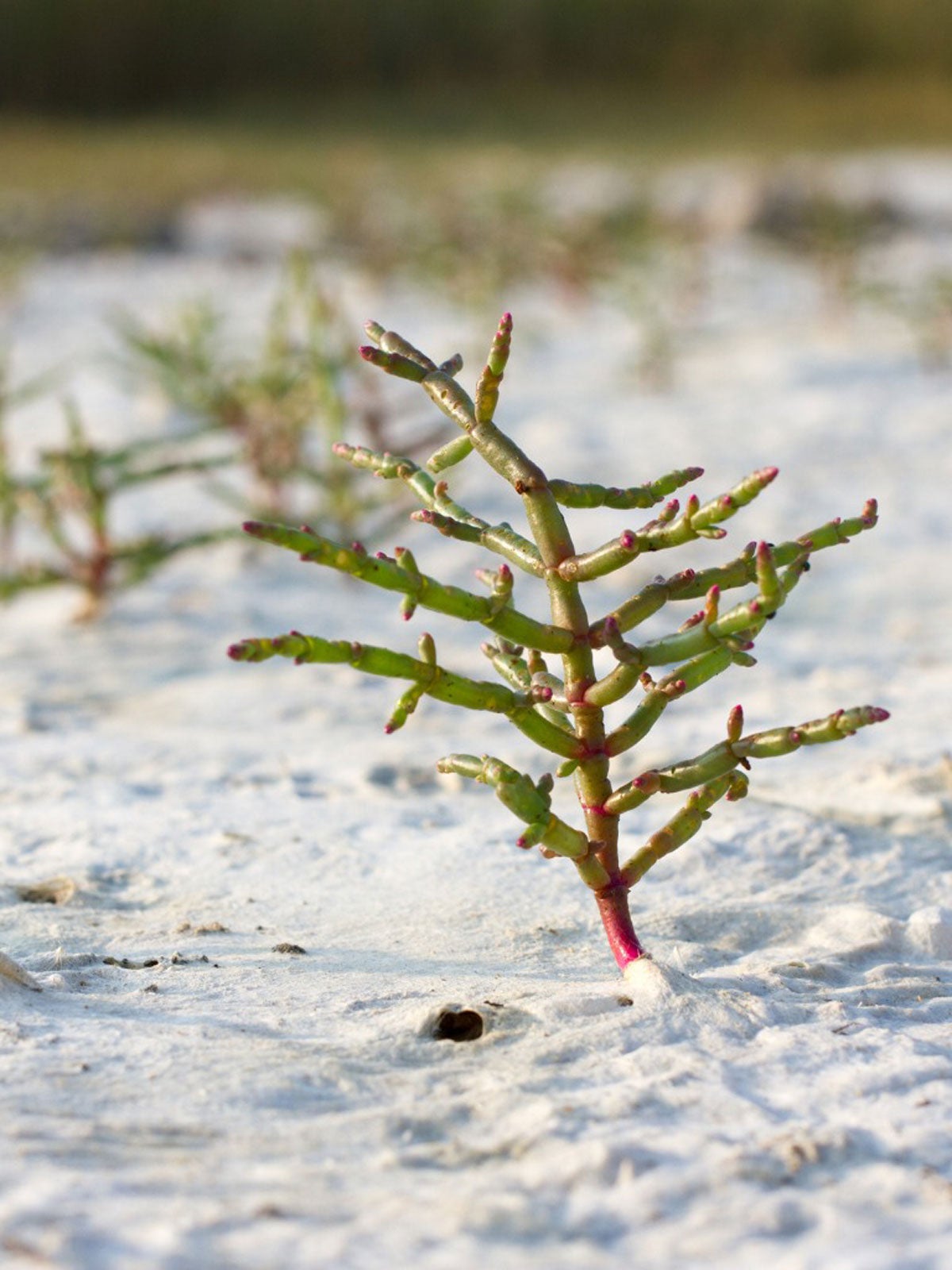Halophytic Succulent Info – Learn About Salt Tolerant Succulents


Does your succulent collection include saltwater plants? You might have some and not even be aware. These are called halophytic succulents – salt tolerant plants as opposed to glycophytes (‘glyco’ or sweet). Glycophytes comprise most of our houseplants, outdoor ornamentals, shrubs, trees, and crops. Learn about the differences here.
What is a Halophyte Plant?
A halophyte is a plant that grows in salty soil, saltwater, or one that might experience contact with saltwater at its roots or other parts of the plant. These originate or grow in saline semi-deserts, seashores, marshes, mangrove swamps, and sloughs.
Salt tolerant succulents and other halophytes often originate and grow in and near coastal areas and saline heavy habitats a little further inland. These can also grow in areas that have become salty because of unnatural repeated additions of salt, such as road salt used in winter. Most are perennial plants with deep root systems.
Some are regularly subjected to salt spray through the ocean breeze and only have saltwater available to them. Others selectively enter dormancy until fresh water is available. Most need fresh water to create seeds. At other times, they filter through the saltwater or choose these times to again enter dormancy. A few exist using saltwater in a limited manner. These are a small percentage of the plants we grow.
Trees, shrubs, grasses, and other plants may be salt tolerant. Halophytic plants may also be succulents. Further classification includes facultative halophytes, those that can grow in both saline and non-saline habitats. Others are obligate halophytes that can survive only in a saline environment.
What are Halophytic Succulents?
While a small percentage of succulents are of this type, halophytic succulent info says there are more than you would imagine that are salt resistant or salt tolerant. Just like other succulents, halophytic succulents retain water as a survival mechanism, usually storing it in the leaves. These include:
- Salicornia (A salt lover which grows better when saltwater is available)
- Common Ice Plant
- Sea Sandwort
- Sea Samphire
- Kalanchoe
Halophytic Succulent Info
The plant Salicornia, also called pickleweed, is one of the rare salt loving succulents. They actively absorb salt from the surrounding environment and channel it into their vacuoles. Osmosis then takes over and floods the plant’s cells with water. The salt concentrations assure Salicornia that water will continue to rush to the cells.
Sign up for the Gardening Know How newsletter today and receive a free copy of our e-book "How to Grow Delicious Tomatoes".
Salt is one of the nutrients necessary for plant growth; however, it is only needed in small amounts by most plants. Some salt-loving plants, such as the Salicornia, perform better with the addition of salt to the water or even regular watering with salinized water.
Projects are currently underway using salinized water to grow crops of the edible Salicornia. Some gardeners insist that all houseplants benefit from the addition of Epsom salts, growing healthier plants with bigger foliage and more blooms. Those that insist on its use apply it monthly when watering, using one tablespoon per gallon of water. It is also used as a foliar spray or added dry to the soil.

Becca Badgett was a regular contributor to Gardening Know How for ten years. Co-author of the book How to Grow an EMERGENCY Garden, Becca specializes in succulent and cactus gardening.